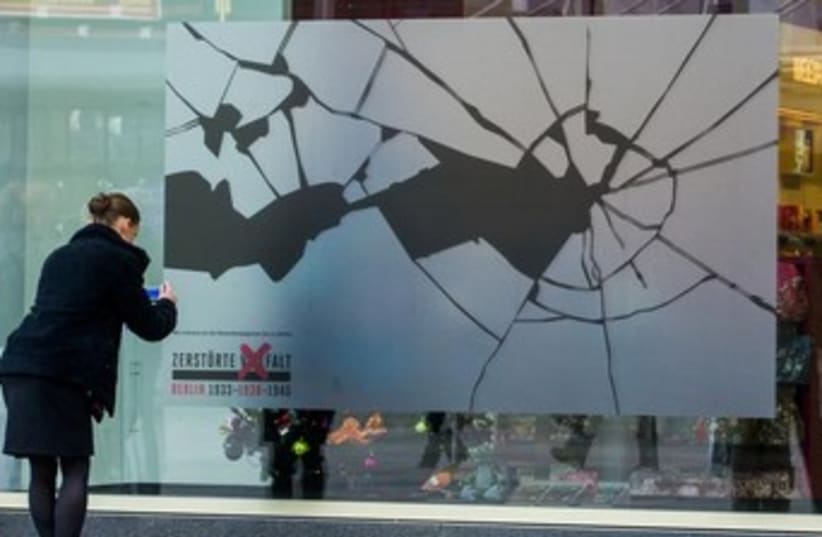Dr Joseph Carlebach, the head rabbi of Hamburg at that time, saw greater meaning in the survival of the small synagogue, and together with Hans Lehmann, a German Jew who had moved to Stockholm, he came up with a plan to have it transported to safer shores. So Agudat Jescharim was smuggled out of Germany under false papers, and marked as miscellaneous timber it arrived in Stockholm one brisk spring morning in 1939.
Agudat Jescharim has been the place of worship for countless men and women since it was founded in 1780. Now, as Adat Jeschurun, it is mine. Every single Shacharit I look around the room and I see hope, and I see defiance. We are all shards of glass, scattered in the diaspora. As the benches we sit on, the pillars and walls surrounding us, we too exist in spite of everything.
Still alive.
Still here.
Still Jews.
When the Jewish students of Vasa Real in Stockholm came to school yesterday, they saw swastikas and anti-Semitic slurs covering the building. This garnered a lot of media attention, as it should, but in the end I saw more outrage than analysis. We are at this juncture for a reason, and if we fail to identify it we are bound to take a wrong turn back in history. The graffiti on those walls is not the disease, but a mere symptom of institutionalized intolerance. We should not merely organize a protest - we should be the protest. We should live it, act it and own it - every single day. That is the difference between acting out of fear and acting out of conviction. Fear is an impulse, while conviction is eternal. The danger is not the graffiti, but letting the graffiti overshadow both our real struggle and our real purpose. The problems facing Swedish Jewry do not wash off quite as easily, nor can they be fixed with a single act of solidarity, no matter how genuine or moving.
I am writing this as we are about to celebrate Purim, and we remember not only the miracle of survival, but also the resilient power of the Jewish identity. It is a recurring lesson; one small synagogue saved from the ashes in Hamburg and brought back to life, an unlikely hero from the house of Ahasuerus, seemingly hopeless battles turning triumphant. At the edge of chaos and destruction, our people are still standing. How? Through bravery, visibility and tradition. Purim presents an opportunity not only to remember heroes of old, but also to acknowledge our own heroic role in history.
When I enter my shul and look at the faces of those I love and care for, my family and my people, I am reminded of why I do what I do. Ours is a story of survival and of faith. And this synagogue, my home away from home, perfectly encapsulates both.
In 2014, 234 years after it was founded, Adat Jeschurun is still standing, And as long as it is, so will we.
Annika Hernroth-Rothstein is a political adviser, writer and activist. An alumni of the Young Jewish diplomatic seminar (organized by the Mizrad Hahutz) and Tikvah seminars in NYC. She lives in Stockholm, Sweden, with her two children. Follow her on Twitter.
